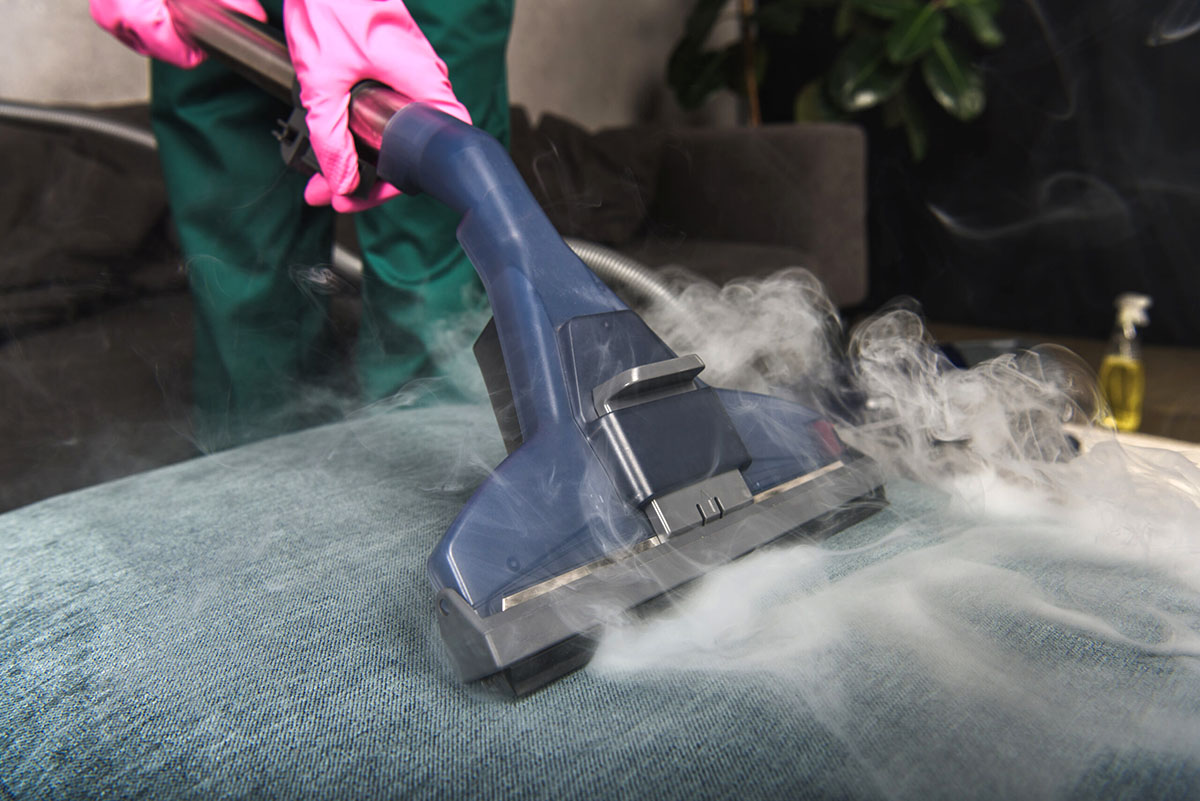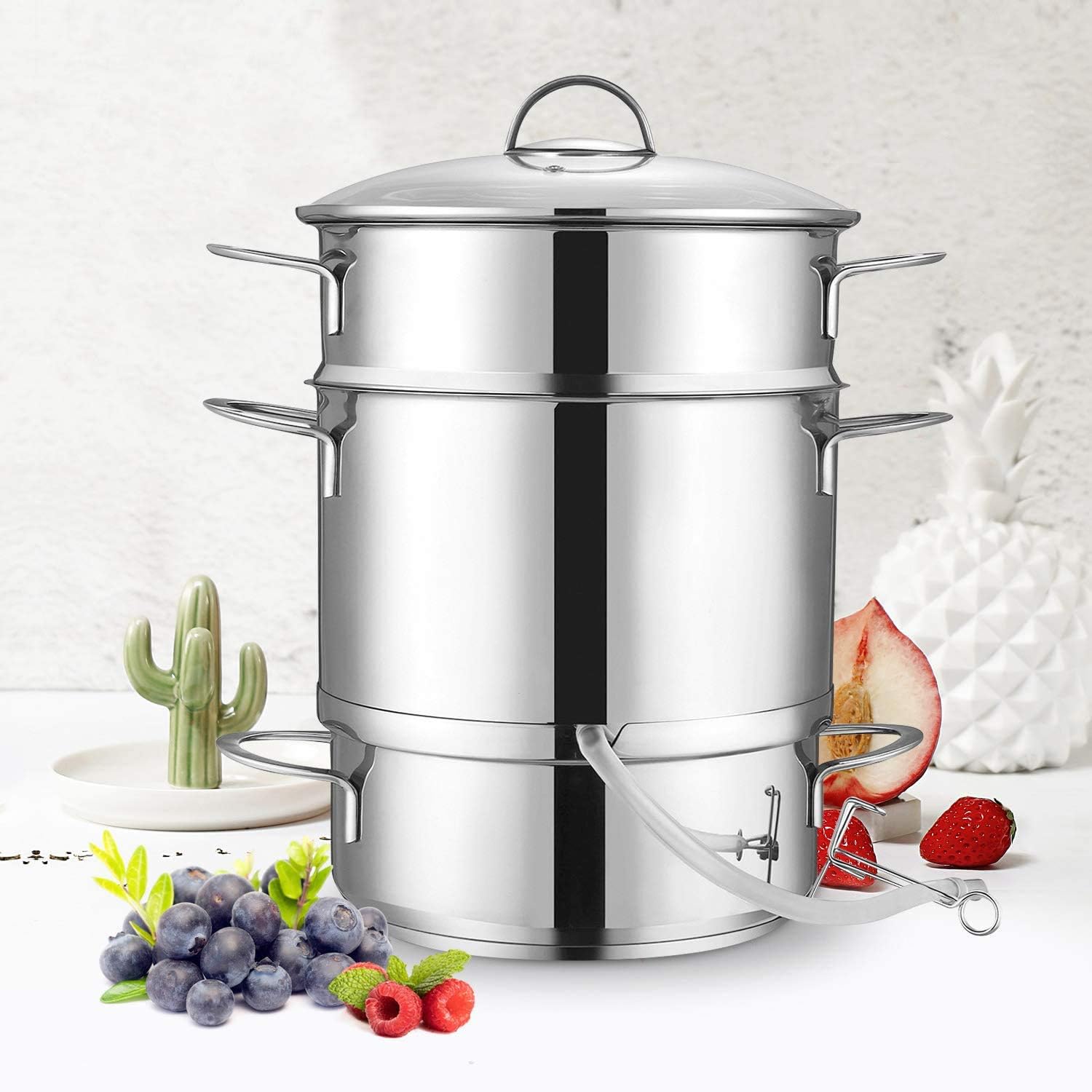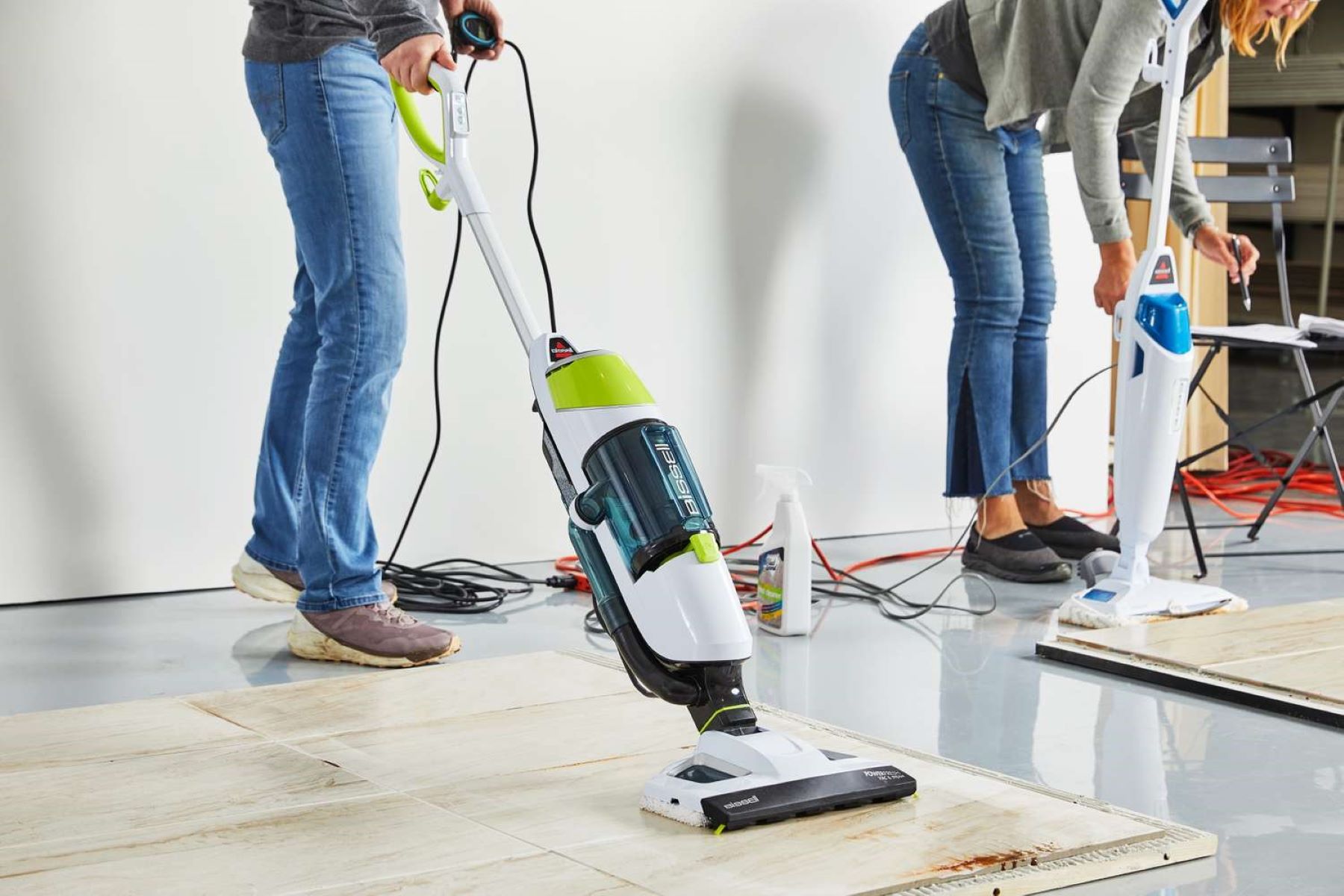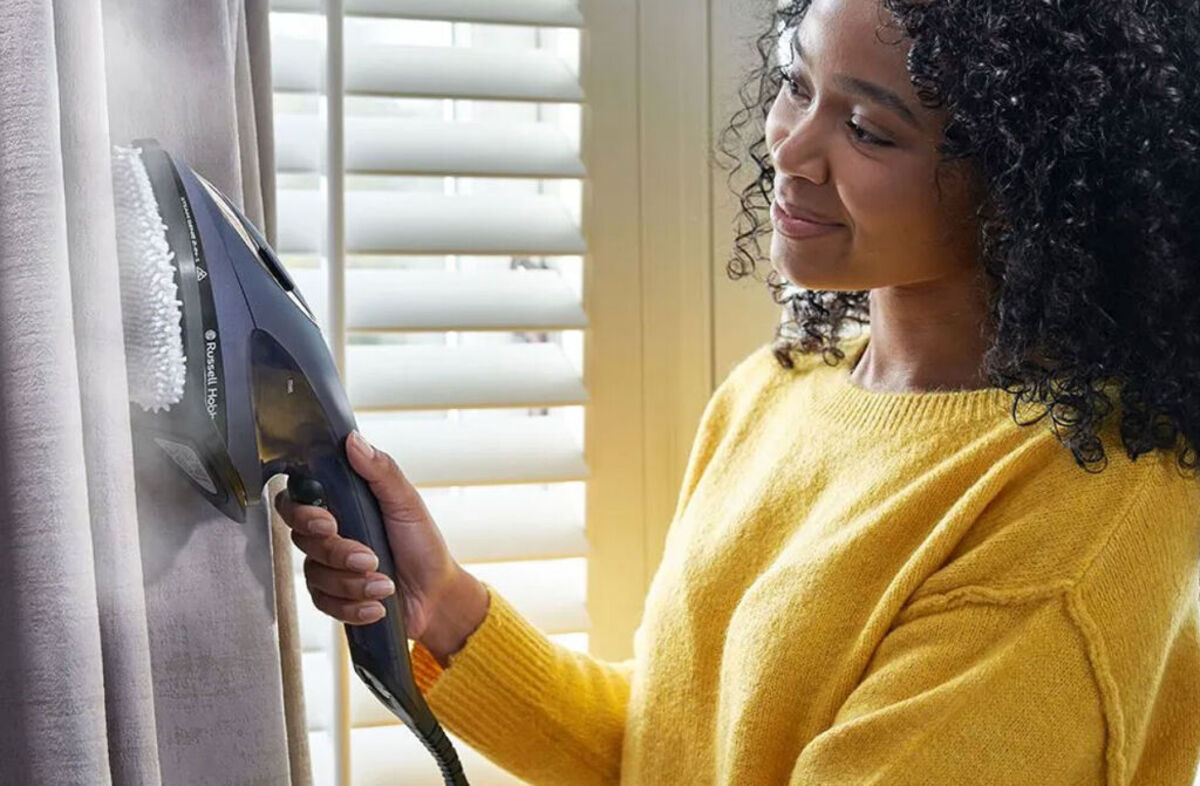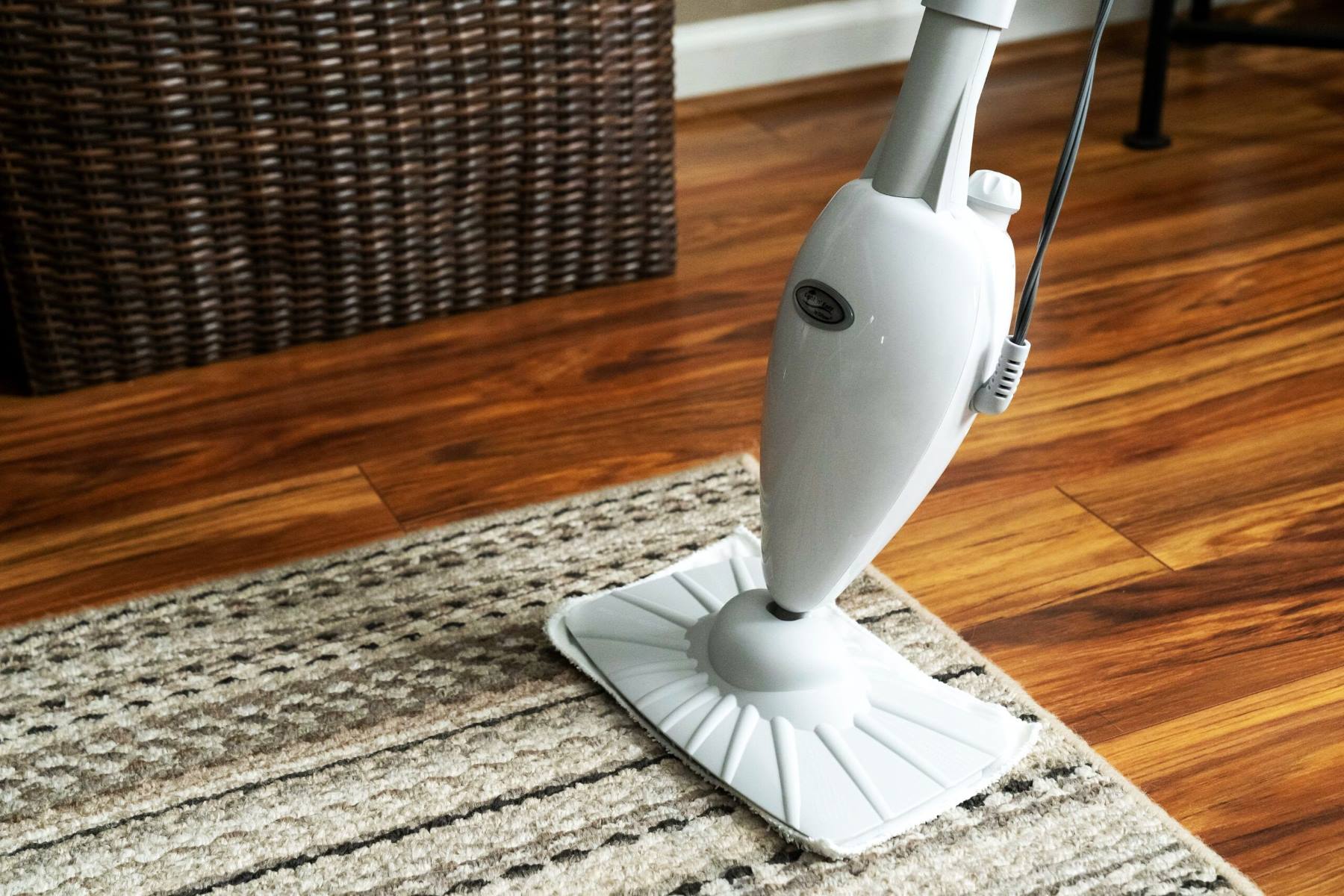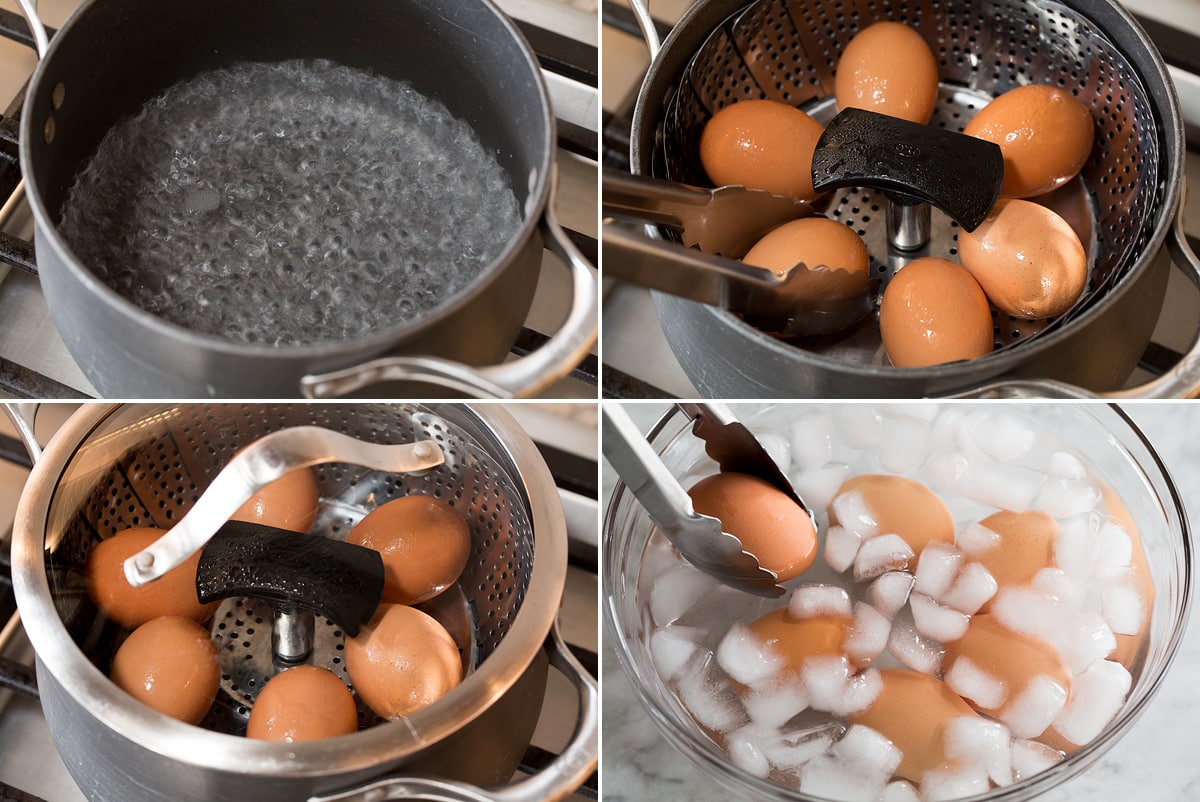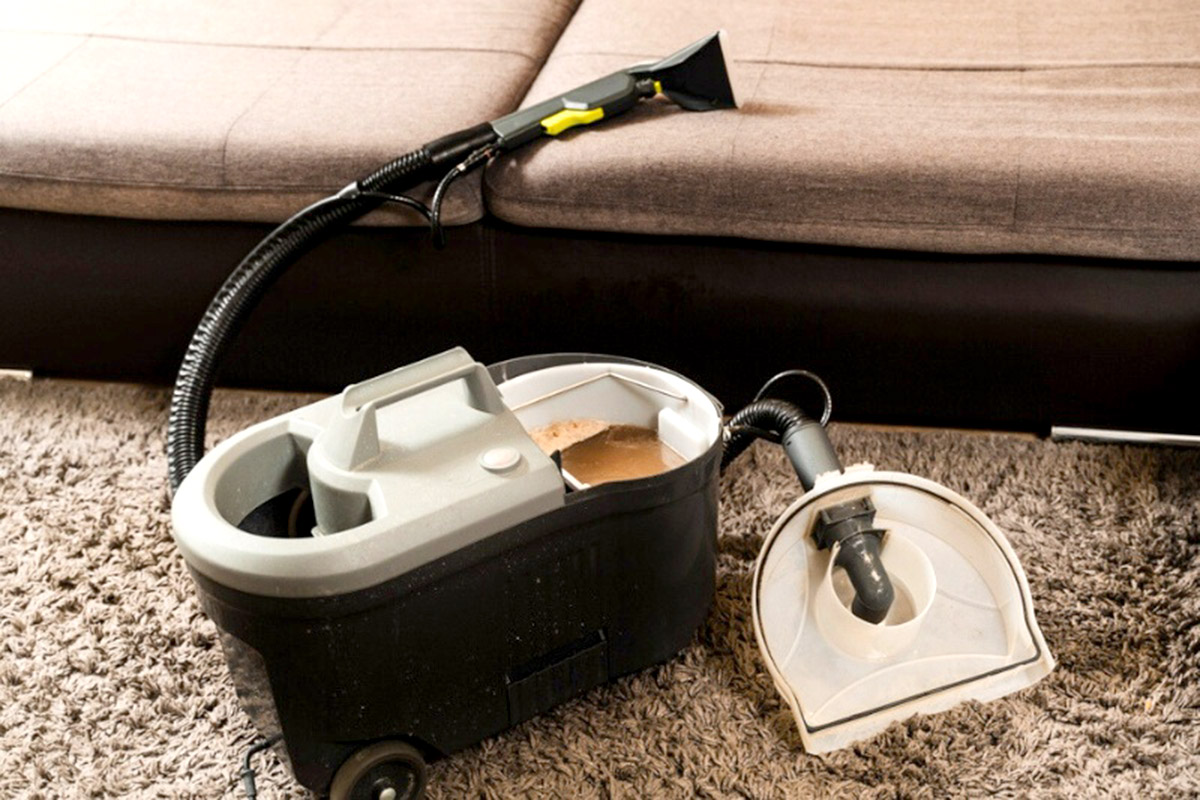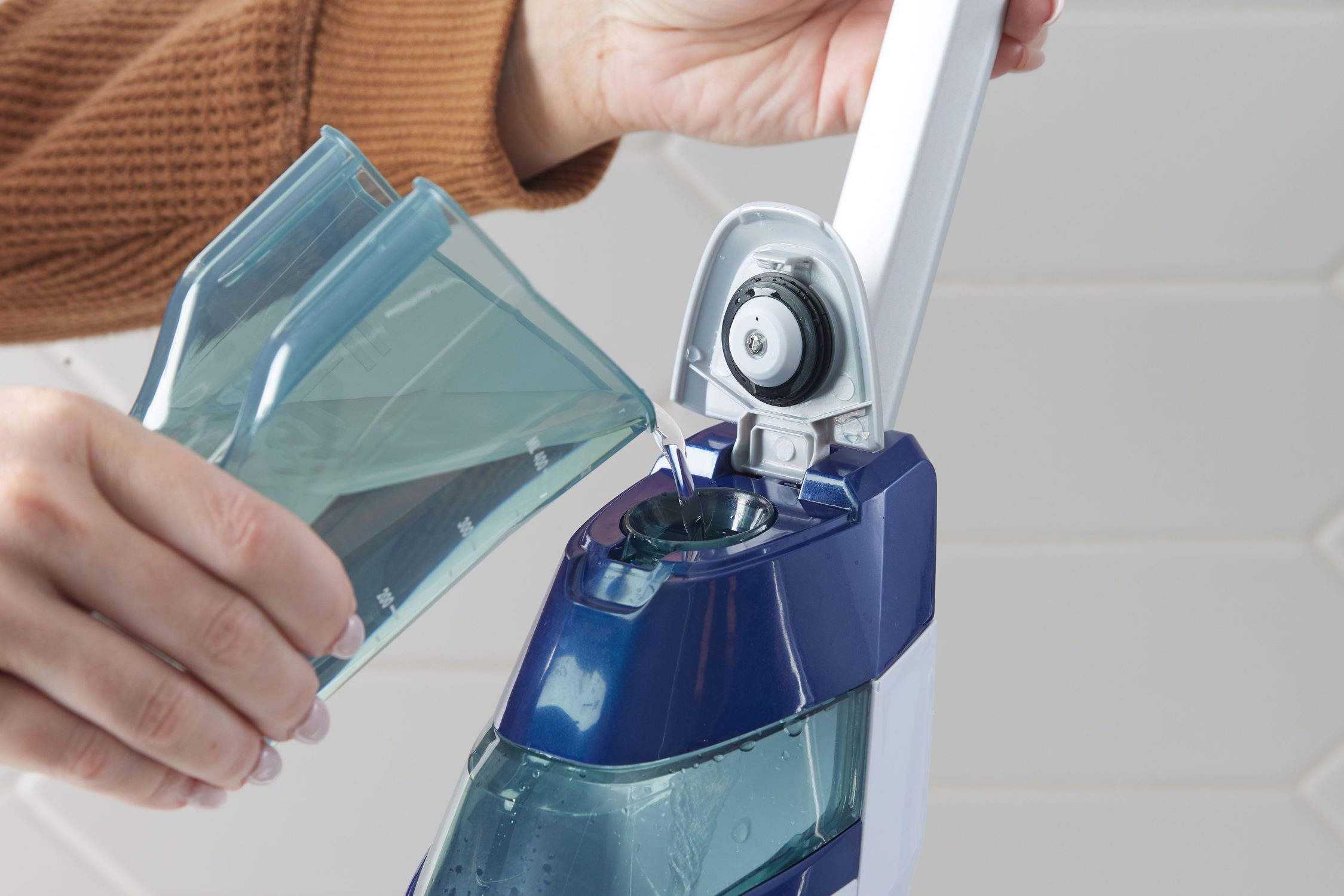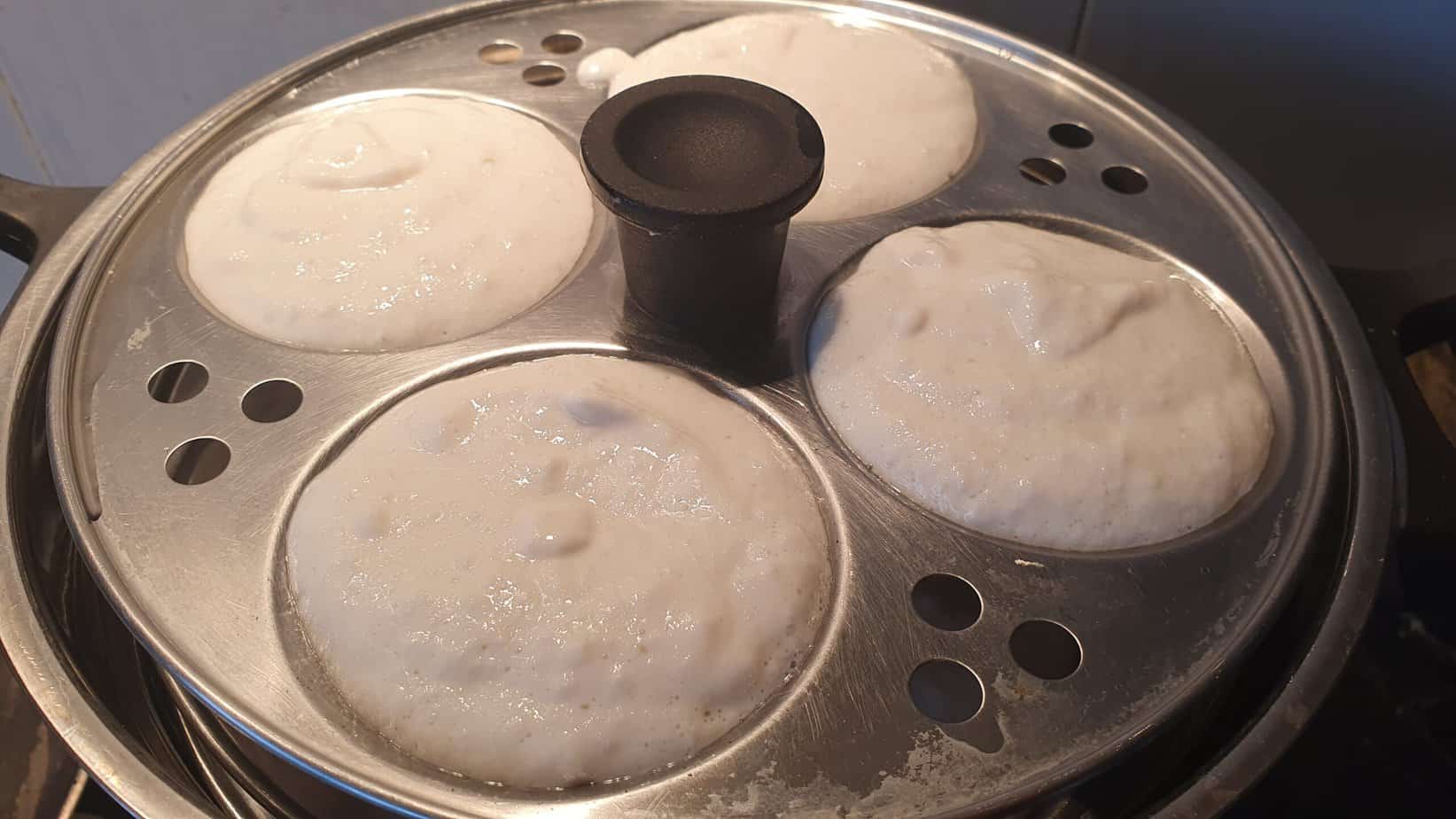Home>Furniture>Bedroom Furniture>How To Steam A Mattress
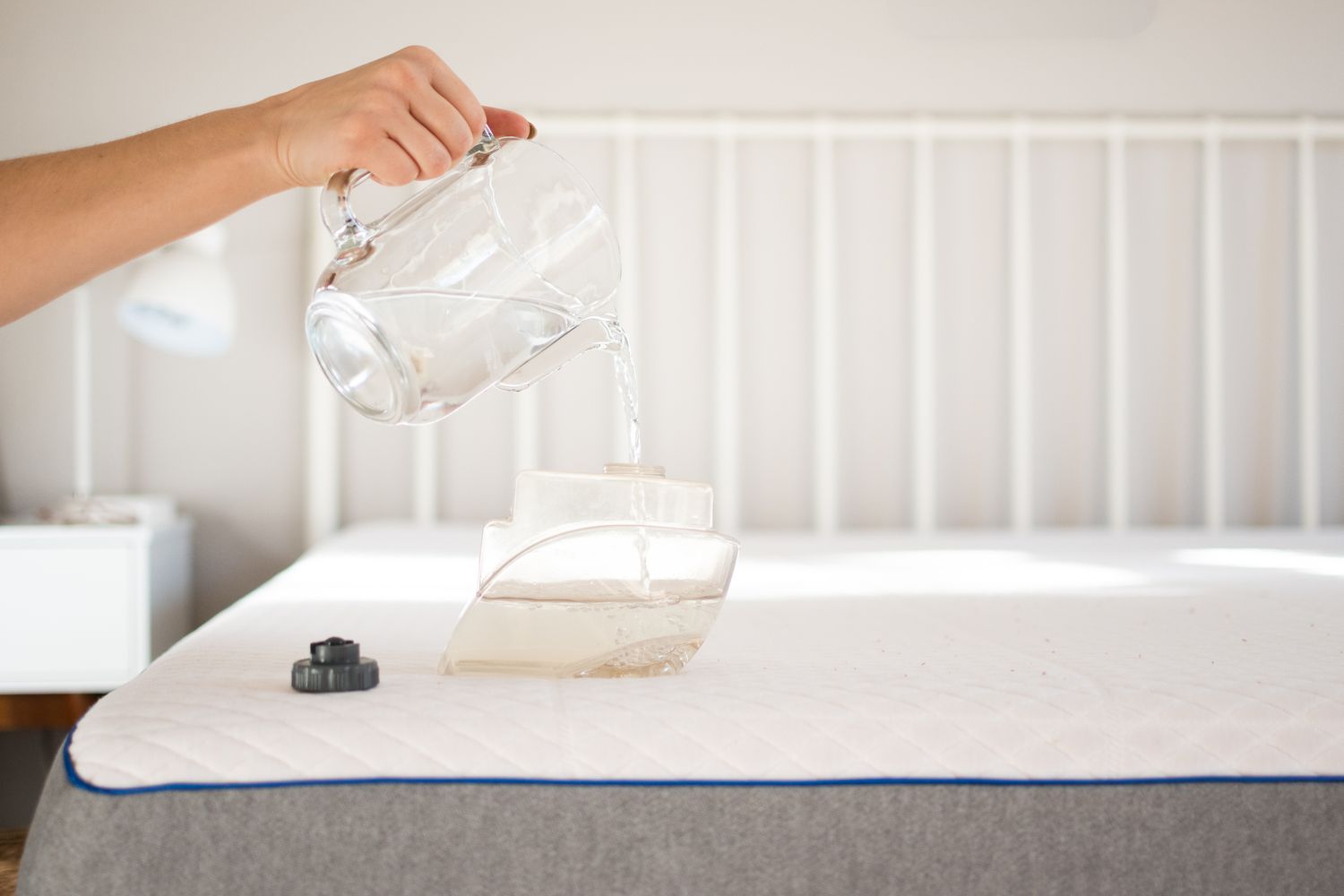

Bedroom Furniture
How To Steam A Mattress
Modified: February 20, 2024
Learn how to steam clean your mattress for a fresh and sanitized bedroom experience. Discover effective techniques and tips for maintaining your bedroom furniture.
(Many of the links in this article redirect to a specific reviewed product. Your purchase of these products through affiliate links helps to generate commission for Storables.com, at no extra cost. Learn more)
Introduction
Welcome to the ultimate guide on how to steam a mattress. When it comes to keeping our bedroom clean, we often focus on changing bed linens and dusting the furniture. However, one important aspect that is often overlooked is the cleanliness of our mattress. Mattresses can accumulate dust mites, dirt, sweat, and allergens over time, making them a breeding ground for bacteria and causing potential health issues. Steaming your mattress regularly is a highly effective method to maintain its cleanliness and improve indoor air quality.
In this comprehensive guide, we will explore the importance of steaming a mattress and the steps involved in doing so. Whether you have a conventional mattress or a memory foam mattress, the techniques discussed here will help you achieve a deep clean and prolong the lifespan of your mattress.
So, let’s dive in and discover how to properly steam a mattress to ensure a healthy and hygienic sleeping environment!
Key Takeaways:
- Regularly steaming your mattress eliminates dust mites, bacteria, and allergens, creating a fresh and healthy sleeping environment. Follow a thorough cleaning routine to enjoy a cleaner, more comfortable sleep space.
- Steaming your mattress should be done every few months to maintain cleanliness and hygiene, promoting improved indoor air quality and extending the mattress lifespan. Enjoy the revitalizing benefits of a fresh and sanitized sleeping environment.
Read more: How To Clean A Mattress With A Steam Cleaner
Importance of Steaming a Mattress
Steaming a mattress goes beyond just surface cleaning. It is an essential step in maintaining a healthy sleeping environment. Here are some key reasons why steaming your mattress is important:
- Eradicates Dust Mites: Dust mites are tiny creatures that thrive in mattresses and feed on dead skin cells. These microscopic pests can trigger allergies and respiratory issues, especially for those with asthma or other sensitivities. Steaming helps kill dust mites and reduces their population on your mattress, creating a cleaner and healthier sleeping space.
- Eliminates Bacteria and Viruses: Our mattresses can harbor various bacteria and viruses that we unknowingly bring into our sleeping area. Steaming uses high temperatures to effectively kill harmful microorganisms, minimizing the risk of infections and promoting better overall health.
- Removes Stains and Odors: Over time, mattresses can become stained due to spills, accidents, or body fluids. These stains not only look unsightly but can also emit unpleasant odors. Steam cleaning can effectively break down and remove these stains, leaving your mattress fresh, clean, and odor-free.
- Reduces Allergens: Allergens like pollen, pet dander, and mold spores can find their way into our bedrooms and settle on our mattresses. These allergens can trigger allergies, asthma attacks, and respiratory problems. Steaming your mattress helps to eliminate these allergens, providing a healthier environment for better sleep.
- Extends Mattress Lifespan: Regular steaming can help extend the lifespan of your mattress. The high temperatures from steaming not only kill bacteria and pests but also help to remove trapped dirt and oils that can cause premature wear and degradation of the mattress materials. This can potentially save you money by prolonging the need for mattress replacement.
As you can see, steaming your mattress offers numerous benefits beyond just aesthetics. It helps create a clean, hygienic, and allergen-free sleeping environment, promoting better sleep quality and overall well-being.
Preparing the Steaming Equipment
Before you begin steaming your mattress, it’s important to gather the necessary equipment and ensure everything is prepared. Here’s a step-by-step guide to help you prepare the steaming equipment:
- Choose the Right Steamer: Look for a handheld steamer or a steam cleaner that is suitable for use on upholstery and mattresses. Make sure it has a nozzle attachment and a continuous steam function.
- Read the Instructions: Familiarize yourself with the manufacturer’s instructions for your steaming equipment. Different steamers may have particular requirements or precautions that need to be followed.
- Fill the Steamer: Fill the steamer’s water tank with distilled or purified water. Avoid using tap water, as it may contain minerals that can potentially clog the steamer or leave residue on your mattress.
- Preheat the Steamer: Plug in the steamer and allow it to preheat according to the manufacturer’s instructions. This typically takes a few minutes.
- Test the Steamer: Before using the steamer on your mattress, perform a test run on an inconspicuous area, such as a corner or underside of the mattress, to ensure that the steamer is functioning properly and that it does not cause any damage or discoloration.
- Prepare the Steam Cleaner: If you are using a steam cleaner, follow the instructions to set it up and adjust the steam intensity or temperature settings if necessary.
By taking the time to properly prepare the steaming equipment, you can ensure a smooth and effective cleaning process without any potential damage or issues. Once you have prepared the equipment, you are ready to move on to the next steps in the mattress steaming process.
Removing Bedding and Pillows
Before you can start steaming your mattress, it’s important to remove all bedding and pillows. This step allows for better access to the mattress surface and ensures a thorough cleaning. Here’s what you need to do:
- Strip the Bed: Start by removing all sheets, pillowcases, and any other bedding from the mattress. Take off the mattress protector or mattress pad if you have one.
- Wash Bedding: Place all removable bedding items, such as sheets and pillowcases, into the washing machine. Follow the care instructions on the labels for the appropriate washing and drying settings. This helps to keep your bedding fresh and clean.
- Vacuum Pillows: While the bedding is being washed, take the time to vacuum your pillows. Dust, dirt, and dead skin cells can accumulate on pillows over time, so it’s important to clean them regularly. Use a vacuum cleaner with a brush attachment to remove any surface dirt and debris. If your pillows are machine-washable, you can follow the manufacturer’s instructions to clean them as well.
- Air Out Pillows: After vacuuming, place your pillows in a well-ventilated area or outside to allow them to air out. This helps to freshen them up and eliminate any odors.
By removing all bedding and giving your pillows some attention, you are setting the stage for a thorough mattress cleaning. Once the bedding is washed and the pillows are cleaned, you can move on to the next steps in the process.
Vacuuming the Mattress
After removing the bedding and pillows, the next step in preparing your mattress for steam cleaning is to vacuum it. Vacuuming helps to remove loose dirt, dust, and debris from the surface of the mattress. Here’s how you can effectively vacuum your mattress:
- Choose the Right Vacuum: Use a vacuum cleaner with a handheld attachment, upholstery attachment, or a mattress-specific vacuum for best results. These attachments are designed to effectively remove dirt and dust from mattresses without causing damage.
- Start from the Top: Begin at the top of the mattress and work your way down. This ensures that any dirt or debris that falls during the vacuuming process is captured and removed effectively.
- Vacuum All Sides: Move the vacuum cleaner in slow, overlapping strokes across the entire surface of the mattress, including the top, sides, and corners. Pay extra attention to areas where dust tends to accumulate, such as the creases and seams of the mattress.
- Use Attachments: If your vacuum cleaner has a brush attachment, use it to agitate the surface of the mattress gently. This helps to loosen small particles and embedded dirt for more efficient removal.
- Foam Encased Mattresses: If you have a foam encased mattress with fabric panels on the sides, vacuum these as well. This ensures a thorough cleaning and helps maintain the overall appearance of the mattress.
- Don’t Forget the Base: If your mattress sits on a box spring or platform bed, take a moment to vacuum the base as well. Dust and dirt can accumulate on the surface of the base, which can then transfer back onto the mattress.
By vacuuming your mattress before steam cleaning, you remove loose dirt and debris, making the steam cleaning process more effective. This step also helps to prevent the spread of dirt and dust during the steaming process. Once you have vacuumed the mattress thoroughly, you are ready to move on to spot cleaning any stains that may be present.
When steaming a mattress, make sure to use a handheld steamer with a nozzle attachment to reach all areas. Start from the top and work your way down in a slow, steady motion to effectively kill dust mites and bacteria.
Read more: How To Clean A Mattress With A Steam Cleaner
Spot Cleaning Stains
Before proceeding with the steam cleaning process, it’s important to address any stains that may be present on your mattress. Spot cleaning stains helps to prevent them from setting deeper into the mattress during the steam cleaning process. Here’s how you can effectively spot clean stains:
- Identify the Stains: Inspect your mattress carefully and identify any visible stains. Common types of stains found on mattresses include blood, urine, sweat, and food or beverage spills.
- Blot the Stains: Use a clean, white cloth or paper towel to blot the stain gently. Avoid rubbing the stain as it can spread and drive the stain deeper into the mattress fabric.
- Treat with Stain Remover: Apply an appropriate stain remover to the affected area. Make sure to choose a stain remover that is safe for use on your mattress fabric. Follow the instructions on the stain remover product, allowing it to penetrate the stain for the recommended amount of time.
- Gently Scrub: After the stain remover has had time to work, use a soft-bristled brush or a clean cloth to gently scrub the stained area. Work in a circular motion, applying light pressure to help lift the stain without damaging the mattress fabric.
- Blot and Repeat if Necessary: After scrubbing, blot the area again with a clean cloth or paper towel to remove any excess stain remover and lifted stain particles. If the stain persists, you may need to repeat the process with the stain remover and gentle scrubbing until the stain is fully removed.
- Air Dry the Spot: Allow the spot to air dry completely before proceeding with the steam cleaning process. This ensures that the mattress surface is dry and ready for steam treatment.
By spot cleaning stains on your mattress, you can effectively treat and remove them before the steam cleaning process. This step helps to improve the overall cleanliness and appearance of your mattress. Once the spots are treated and dried, you are ready to move on to the next step: steaming the mattress.
Steaming the Mattress
Now that you have prepared your steaming equipment, removed bedding and pillows, vacuumed the mattress, and spot cleaned any stains, it’s time to proceed with the main step: steaming the mattress. Follow these guidelines to effectively steam clean your mattress:
- Start with a Clean Steamer: Ensure that your steamer is clean and free of any residue or blockages. If necessary, refer to the manufacturer’s instructions for cleaning and maintenance.
- Set the Steamer Temperature: Adjust the steamer to the appropriate temperature setting for your mattress type. Most steamers have different heat settings, so choose the one that is suitable for your specific mattress material.
- Begin at the Top: Start at the top of the mattress and work your way down, section by section. This methodical approach ensures that you cover the entire surface of the mattress evenly.
- Hold the Nozzle Close: Hold the steamer nozzle a few inches above the mattress surface. This allows the steam to penetrate the fabric and effectively sanitize it without causing excess dampness.
- Maintain Continuous Steam: Keep the steamer nozzle in constant motion as you work your way across the mattress. This helps to distribute the steam evenly and avoids any excess moisture buildup in one area.
- Focus on Problem Areas: Pay extra attention to any areas with visible stains, spills, or odors. Hold the steamer nozzle over these areas for a few seconds longer to ensure thorough cleaning and disinfection.
- Take Your Time: Move slowly and methodically to ensure that you cover every inch of the mattress surface. If needed, go over the same area multiple times to ensure effective steam penetration.
- Avoid Excess Moisture: If you notice any excessive moisture buildup during the steaming process, reduce the steam intensity or increase the distance between the nozzle and the mattress surface. This prevents over-saturation and potential damage to the mattress.
Steaming your mattress not only helps to sanitize and eradicate allergens, but it also revitalizes the mattress’s fabric. The high temperature of the steam kills bacteria, dust mites, and other microorganisms that may be present. Once you have completed the steaming process, the next step is to allow the mattress to dry thoroughly.
Drying the Mattress
After steaming your mattress, it’s crucial to ensure proper drying before reassembling the bed. If the mattress is not fully dried, it can lead to the growth of mold or mildew. Follow these steps to effectively dry your mattress:
- Open Windows and Increase Air Circulation: If possible, open windows in the room to allow fresh air to circulate. Good airflow helps to expedite the drying process.
- Use Fans: Set up fans around the room to increase air circulation. Point the fans towards the mattress to help remove moisture and speed up drying.
- Turn on Ceiling Fans: If you have ceiling fans in the room, turn them on to help facilitate air movement and encourage faster drying.
- Leave the Mattress Uncovered: Remove any plastic covers or mattress protectors and leave the mattress uncovered. Allowing air to directly contact the surface will help to evaporate any remaining moisture.
- Avoid Direct Sunlight: While sunlight can aid in drying, direct exposure to the sun’s rays can fade or damage the mattress fabric. Instead, place the mattress in a well-ventilated area away from direct sunlight.
- Patience is Key: The drying time will vary depending on factors such as humidity levels, room temperature, and the amount of moisture present. It is essential to be patient and allow the mattress to dry completely before proceeding.
- Check for Moisture: After a few hours, check the mattress for any signs of remaining moisture. If you notice any damp spots or areas, use a dry cloth to gently blot them and continue with the drying process.
- Confirm Complete Drying: Before reassembling the bed, ensure that the entire mattress is dry to the touch. This step is crucial in preventing mold, mildew, or any funky odors from developing.
By ensuring thorough drying, you help maintain the freshness of your mattress and eliminate the risk of moisture-related issues. Once the mattress is completely dry, you can proceed with reassembling your bed and enjoying a refreshed and clean sleeping surface.
Reassembling the Bed
After successfully steaming and drying your mattress, it’s time to reassemble your bed for a fresh and comfortable sleeping experience. Here’s a step-by-step guide on how to reassemble your bed:
- Clean Bed Frame: Before placing the mattress back on the bed frame, take a moment to clean the frame itself. Use a damp cloth or a mild cleaning solution to wipe down the bed frame, removing any dust or debris.
- Flip and Rotate: If possible, flip and rotate your mattress before placing it back on the bed frame. This helps promote even wear and extends the lifespan of the mattress.
- Protective Mattress Cover: Consider using a protective mattress cover or mattress encasement to safeguard your mattress from future spills, dust, and allergens. This cover acts as an extra layer of protection and is especially useful for those with allergies.
- Place Mattress on Bed Frame: Carefully lift the cleaned and dried mattress and place it back onto the bed frame. Make sure it is centered and aligned properly for maximum comfort.
- Smooth Out Wrinkles: Smooth out any wrinkles or creases on the fitted sheet or mattress protector that you use to cover the mattress. This ensures a neat and comfortable surface to sleep on.
- Add Fresh Sheets and Bedding: Dress your bed with fresh, clean sheets, pillowcases, and any other bedding of your choice. Tuck the sheets tightly under the mattress to ensure a snug fit.
- Fluff Pillows and Add Pillowcases: Fluff your pillows to restore their shape and plumpness. Then, slip them into clean pillowcases and arrange them on the bed for a cozy finishing touch.
- Enjoy a Good Night’s Sleep: Once your bed is fully reassembled and inviting, it’s time to climb in and enjoy a restful night’s sleep. Breathe in the fresh, sanitized air and drift off into dreamland on your clean and comfortable mattress.
By following these steps to reassemble your bed after steaming and drying the mattress, you can create a clean and cozy sleeping environment. Enjoy the refreshed feeling and the knowledge that you have taken the necessary steps to maintain the cleanliness and hygiene of your mattress.
Conclusion
Congratulations! You have successfully learned how to steam clean your mattress and create a clean and hygienic sleeping environment. By following the steps outlined in this guide, you have taken important measures to eliminate dust mites, bacteria, allergens, and stains from your mattress.
Regularly steaming your mattress offers numerous benefits, including improved indoor air quality, reduced allergies, and an extended mattress lifespan. The combination of vacuuming, spot cleaning, and steam cleaning helps to maintain a fresh and healthy sleeping surface.
Remember, it’s crucial to be thorough in your mattress steam cleaning routine. Take the time to properly prepare the equipment, remove bedding and pillows, vacuum the mattress, spot clean stains, steam clean with care, and allow the mattress to dry completely before reassembling the bed.
By incorporating these steps into your regular cleaning routine, you can enjoy a cleaner, more comfortable sleep space and improve your overall well-being. Keep in mind that steaming your mattress should be done regularly, ideally every few months, to maintain its cleanliness and hygiene.
So, go ahead and steam clean your mattress, and experience the joy and comfort of a fresh and sanitized sleeping environment. Sleep tight, breathe easy, and enjoy the revitalizing benefits of a clean and healthy mattress!
Frequently Asked Questions about How To Steam A Mattress
Was this page helpful?
At Storables.com, we guarantee accurate and reliable information. Our content, validated by Expert Board Contributors, is crafted following stringent Editorial Policies. We're committed to providing you with well-researched, expert-backed insights for all your informational needs.
